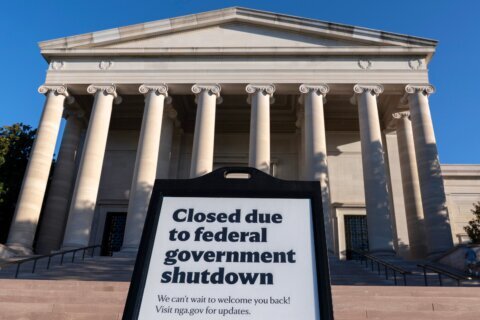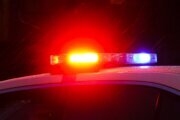As the Transportation Security Administration marks 20 years since taking over airport security screening in the wake of the 9/11 attacks, officials are focused on the future — including some high-tech tools rolling out soon that could make getting through the security line even easier.
“We’re upgrading the technology of our entire screening process,” Administrator David Pekoske told WTOP’s John Domen at BWI Marshall International Airport on Friday morning.
BWI was the first U.S. airport to have TSA officers.
Starting as early as next month, Maryland is set to become the second state to roll out a digital driver’s license that will allow travelers to tap their iPhones rather than pulling out a physical copy of their license.
The project is a partnership among the TSA, Apple and state authorities. It allows travelers to store a digital version of their license in their iPhone’s “Wallet” function.
“You simply tap that iPhone at the security checkpoint and it transmits your identity information that we can verify,” Pekoske said.
While travelers may have concerns about sharing their data, Pekoske said the system will temporarily ingest only limited information, such as the passenger’s name, date of birth and photo.
“The important part is that once a passenger removes their driver’s license or removes the tap and walks away … we erase all that data, we don’t hold that data. So it’s really a very good process from a passenger-convenience perspective, very good for us because it’s better security, and we are doing everything we can to fully protect the privacy rights of the passengers.”
Kristin Katz, who manages technology projects at the airport for the TSA, said the digital license option is set to roll out “hopefully … starting sometime next month.”
The TSA is also upgrading the technology used to scan travelers’ carry-on luggage, transitioning to the use of more powerful CT scan technology that could allow travelers to keep more things zipped up.
“That’s going to be really important for security because it allows us to see things that we need to see in a carry-on bag … for passengers, it also means that they don’t have to take a lot of things out of that bag, because the X-ray is just so much better than what we currently have,” Pekoske said.
X-ray upgrades have already begun at some airports, he said, including in some security lanes at BWI, as well as Reagan National and Dulles International in Virginia.
But with 340 airports and a total of 2,400 security lanes, “It’s going to take us a while to roll it out across the country,” Pekoske said.
Also in the works are software upgrades to body scanners with better detection and lower false alarm rates, which could result in fewer pat-downs of passengers.
“Technology has enabled us to improve our security effectiveness, which is the most important thing for me as the TSA administrator,” Pekoske said. “And at the same time, we look at those technologies, they also allow greater passenger convenience, greater passenger experience.”
WTOP’s John Domen contributed to this story.








